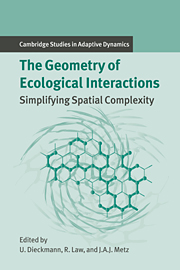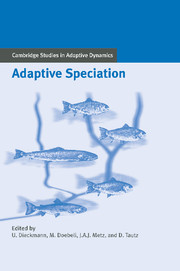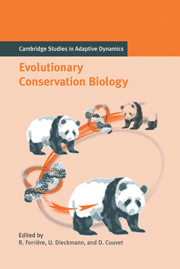The Geometry of Ecological Interactions
The field of theoretical ecology has expanded dramatically in the past few years, while some of the most interesting work has been done using spatial models with stochasticity. This timely volume brings together the work of leading researchers working with this model and explores its role in the study of ecosystem dynamics. With its mathematically rigorous treatments, applications to real ecological problems, and proposals for extending the use of such modeling techniques in the future, this resource will be of great interest to all researchers in theoretical ecology, mathematical biology, and ecosystems analysis.
- Cutting edge material; brand-new developments in modelling and theoretical biology
- Stellar list of contributors
- First in new series developing exciting new field of adaptive dynamics
Reviews & endorsements
"A striking outlier in the edited volume literature. From a technical point of view, it is a tour de force and easily the best-edited volume I have ever read, reviewed, or taught from. There are two dozen chapters on every topic imaginable, and they flow together in a seamless and even stately manner that is altogether absent in most edited volumes in the ecological literature...possessed of rhetorical, literary, and artistic qualities that are sadly (and self-destructively) neglected in modern scientific communication--especially edited volumes." Ecology
"The Geometry of Ecological Interactions: Simplifying Spatial Compexity consistently tries to explain where and why the mean-field approximation breaks down...In addition to helping to bridge the gap between theory and how to apply it, this book will be a good reference for the library of graduate students and researchers who work in this ecotone between theory and applicability." Natural Areas Journal
"[P]rovides an excellent snapshot of these new mathematical and theoretical frontiers for modeling spatial ecological interactions...With its mathematically rigorous treatments, applications to real ecological problems, and proposals for extending the use of such modeling techniques in the future, this resource will be of great interest to all researchers in theoretical ecology, mathematical biology, and ecological modeling..." Ecological Engineering
Product details
February 2011Adobe eBook Reader
9780511836527
0 pages
0kg
148 b/w illus. 13 tables
This ISBN is for an eBook version which is distributed on our behalf by a third party.
Table of Contents
- 1. Introduction Richard Law, Ulf Dieckmann and J. A. J. Metz
- Part I. Empirical and Statistical Background:
- 2. A neighbourhood view of interactions among individual plants Peter Stoll and Jacob Weiner
- 3. Spatial interactions among grassland plant populations Jonathan Silvertown and Bastow Wilson
- 4. Spatio-temporal patterns in grassland communities Tomás Herben, Heinjo During and Richard Law
- 5. Statistical modelling and analysis of spatial patterns David Cox, Valerie Isham and Paul Northrop
- Part II. When the Mean-Field Approximation Breaks Down:
- 6. Grid-based models as tools for ecological research Christian Wissel
- 7. Coexistence of replicators in prebiotic evolution Tamas Czárán and Eörs Szathmáry
- 8. Games on grids Martin Nowak and Karl Sigmund
- 9. The interplay between reaction and diffusion Mikael Cronhjort
- 10. Spirals and spots: novel evolutionary phenomena through spatial self-structuring Maarten Boerlijst
- 11. The role of space in reducing predator-prey cycles Vincent Jansen and André de Roos
- Part III. Simplifying Spatial Complexity: Examples:
- 12. Spatial scales and low-dimensional deterministic dynamics Howard Wilson and Matthew Keeling
- 13. Lattice models and pair-approximation in ecology Yoh Iwasa
- 14. Moment approximations of individual-based models Richard Law and Ulf Dieckmann
- 15. Evolutionary dynamics in spatial host-pathogen systems Matthew Keeling
- 16. Foci, small and large: a specific class of biological invasion Jan-Carel Zadoks
- 17. Wave patterns in spatial games and the evolution of cooperation Régis Ferriere and Rick Michod
- Part IV. Simplifying Spatial Complexity: Techniques:
- 18. Pair approximations for lattice-based ecological models Kazunori Sato and Yoh Iwasa
- 19. Pair approximations for different spatial geometries Minus van Baalen
- 20. Moment methods for ecological processes in continuous space Benjamin Bolker, Steven Pacala and Simon Levin
- 21. Relaxation projections and the method of moments Ulf Dieckmann
- 22. Methods for reaction-diffusion models Vivian Hutson and Glen Vickers
- 23. The dynamics of invasion waves Johan A. J. Metz, Denis Mollison and Frank van den Bosch
- 24 Epilogue Johan A. J. Metz, Ulf Dieckmann and Richard Law
- References
- Index.












